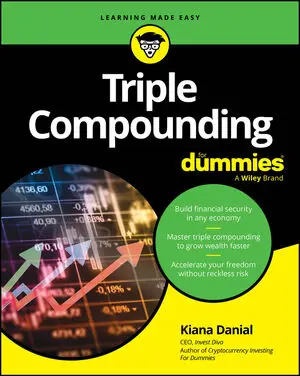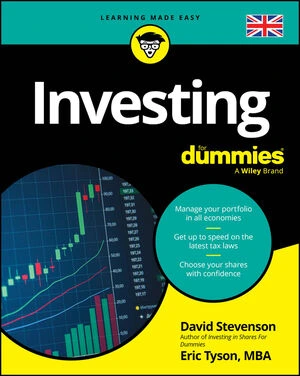Triple compounding is a wealth-building system that goes far beyond simple interest. It works across your finances, business, and even your relationships by helping you generate, automate, and accelerate growth in all areas of your life. Use this cheat sheet to stay grounded in the key frameworks, questions, and tools that triple compounders use daily.
The triple compounding formula: Your wealth-building engine
To make my Triple Compounding system work for you, all seven of the following components need to be in motion. Miss one, and your results stall. Stack them together, and your wealth starts compounding in multiple directions at once.
-
Invest in yourself to generate more income.
Focus on high-ROI activities that upgrade your skills, mindset, and earning potential.
-
Automate your income generation.
Set up systems that remove you from the constant hustle. Think digital products, delegation, licensing, or recurring revenue.
-
Spend less than you earn and invest the difference.
Your margin (the gap between income and expenses) is the fuel for your investments.
-
Automate your saving and investing process.
Remove decision fatigue and emotion. Use tools like auto-transfers, contribution schedules, and reinvestment settings.
-
Reinvest your returns for compounded growth.
Don’t just let your money sit. Put your profits back into the system so it keeps working for you.
-
Continue until you reach your financial freedom number.
This is the point where your investment income covers your lifestyle — without you needing to work.
-
Enjoy the income your portfolio produces.
Let your investments fund your desired life while you choose how, when, and if you work.
9 habits of high-performing triple compounders
These habits go beyond budgeting and “safe” investing. They reflect the mindset, strategy, and automation that fuel exponential wealth through my Triple Compounding method. Use this list as a personal audit — and a reminder of what true wealth builders do differently.
-
Contribute consistently, no matter what.
Invest between 8 percent and 25 percent of earned income into a personal portfolio — automated and nonnegotiable — even during uncertain times.
-
Make decisions from your future self, not the present one.
Choose actions based on who you’re becoming, not who you are now. The best decisions often feel illogical to your current identity.
-
Follow excitement, not the clock.
Focus on work that energizes and challenges you. Wealth builders finish needle-moving projects, regardless of the hours they take.
-
Set scary goals and choose the boldest path.
Aim for outcomes that stretch your limits, then take the path with the highest impact — even if it feels risky or unconventional.
-
Invest in mentorship — and take their advice.
Work with proven mentors and implement their guidance. Don’t let ego, fear, or scarcity block high-return decisions.
-
Say no to misaligned opportunities.
Decline people, projects, or offers that don’t align with your next-level identity — even if they look “good” on paper.
-
Ditch outdated advice and build a system.
Ignore slow-growth advice and build a scalable system instead. Rely on strategy and automation, not just saving and hoping.
-
Eliminate reverse compounding.
Stop paying unnecessary fees, eliminate bad debt, and shift to wealth-compounding structures. Keep only good debt that works for you.
-
Rewire your mind before growing your portfolio.
Wealth begins with belief. Build a resilient, forward-thinking mindset before expecting exponential results.
My Triple Compounding system in a nutshell: Don’t stop at basic compounding. Stack investing in three different asset classes and then compound three specific actions that include generating, automating, and accelerating to build wealth that lasts generations:
1X = Working harder.
2X = Working smarter.
3X = Letting your money multiply itself through systems, automation, and reinvestment.
The 3x3 triple compounding framework at a glance
| |
Stage 1: Generate |
Stage 2: Automate |
Stage 3: Accelerate |
| Wealth |
Earn more, invest wisely |
Set contributions on autopilot |
Reinvest profits and income |
| Health |
Build energy and vitality |
Systematize habits |
Optimize for performance |
| Relationships |
Step into a new identity |
Protect time and boundaries |
Compound love and legacy |
Questions every triple compounder asks
Use these as a mental checklist when making decisions:
- Is this a generator of long-term value or just a quick fix?
- Can I automate this to free up time or energy?
- Will this accelerate my goals, or distract from them?
- Is this aligned with my future identity?
- Am I compounding in the right direction — or am I reverse-compounding?
12 things you could be reverse-compounding without realizing it
Reverse compounding is when your money works against you instead of for you. These silent wealth killers drain your future by stacking up losses, fees, and inefficiencies over time. Audit this list regularly to protect your triple compounding system.
- Bad debt: High-interest consumer debt (like credit cards) compounds in the wrong direction and erodes your net worth fast.
- Ignoring maintenance: Neglected health, home, car, or business systems can lead to expensive breakdowns — costing you more in the long run.
- Poor tax planning: Avoidable tax liabilities reduce your compounding potential. Proactive strategy beats reactive payments.
- Leveraged ETFs: These products are designed for short-term trades — not long-term holding. Volatility decay can quietly drain returns.
- 401(k) hidden fees: Employer-sponsored retirement plans often carry layered fees that reduce your real growth over time.
- High-expense-ratio mutual funds: Fees above 1 percent eat into compounding. Lower-cost index alternatives typically perform better in the long term.
- Lifestyle inflation: Increasing spending as income rises reduces the margin available to invest. It’s one of the fastest ways to sabotage freedom.
- Non-traded REITs: Illiquidity, high upfront costs, and lack of transparency make these a trap for many passive investors.
- Late fees: Small penalties compound into financial and credit score setbacks. Automate payments to avoid them.
- Actively managed funds: Most underperform the market after fees. Passive strategies often win on net returns and simplicity.
- Annuities with high fees: Complex fee structures can cancel out the promised safety or income guarantees. Always read the fine print.
- Private equity hidden fees: Carried interest, management fees, and lack of transparency can eat away at returns in private investments.
The five steps of the Invest Diva Diamond Analysis Framework
Use this five-step investing process to evaluate any asset with clarity and confidence. The Invest Diva Diamond Analysis (IDDA) Framework helps you align your decisions with your personal risk profile, long-term goals, and the actual market dynamics—so you don’t fall into hype traps or make emotion-based moves.
-
Capital: Understand your risk tolerance.
Before analyzing any asset, assess your willingness and ability to take risks. Consider the following:
- How much of your capital are you willing to invest?
- How volatile are your income and lifestyle?
- What level of loss can you withstand — mentally and financially?
- Is this capital you might need in the near future?
Why it matters: Your risk tolerance sets the boundaries for how aggressive or conservative your investment plan should be.
-
Intentional: Set your goal and time frame.
Define the why behind the investment:
- Are you aiming for long-term growth, short-term profit, passive income, or diversification?
- What is your ideal holding period — days, months, or years?
Why it matters: Every investing decision should serve a specific, intentional purpose in your triple compounding system.
-
Fundamental: Assess the asset’s long-term value.
Now that your personal context is clear, evaluate the investment’s quality:
- What does the asset actually do or produce?
- How strong is its financial foundation or utility?
- Is it a trend or a solution to a real-world problem?
The fundamentals help determine whether the asset fits your risk tolerance and goals from steps 1 and 2.
-
Sentimental: Read the emotional climate.
Measure how the public and media feel about the asset right now:
- Is there hype or fear driving price movement?
- Is the trend early or already crowded?
- Are social signals aligned with the fundamentals?
High sentiment + weak fundamentals = potential trap. Use sentiment to time entries — not justify bad bets.
-
Technical: Choose smart entry and exit points.
Map your price strategy:
- Identify support and resistance zones.
- Look for chart patterns and trends.
- Use tools like RSI, Fibonacci, moving averages, or MACD.
- Decide in advance your buy levels, profit targets, and stop-losses.
Your technicals should be realistic for capital allocation and the time frame you set in steps 1 and 2.
Top automation tools for wealth compounding
| Tool |
Purpose |
| Auto-transfers |
Automate investing and savings |
| Limit orders (buy/sell) |
“Set it and forget it” trading |
| DRIP (dividend reinvestment plan) |
Compound dividends automatically |
| HYSAs (high-yield savings) |
Keep idle funds earning interest |
| Subscription filters |
Cut money leaks from recurring charges |






